The Toronto Maple Leafs are currently sitting in a wild card position in the Eastern Conference. They have 22 points, are only four back of the Boston Bruins for first place and have scored 64 goals, which puts them in the top 10.
This sounds like a team that is heading in a positive direction, right? Not quite.
For the better part of a month and a half, the Maple Leafs’ on-ice play has been extremely concerning. This is a team with an insane amount of offensive threats. How can this team be hurting themselves every night? Poor starts, defensive issues, a lacklustre power play, and penalty trouble is deeply hurting this team despite their position in the standings. If these issues continue, this could mean bad news for this team in the long run.
Poor Starts Are a Problem
Since the first drop of the puck on opening night against the Ottawa Senators, allowing the first goal and poor starts have been the main point of concern for the Maple Leafs.
The Maple Leafs have allowed the most goals in the first period so far with 24. In addition, they’ve allowed the first goal in 14 of their 19 games. Head coach Mike Babcock has always been preaching about his team to “start on time” too many times since he joined the team. He’s done his part. As much as people want to make him the scapegoat, these starts and poor performances are ultimately on the players.
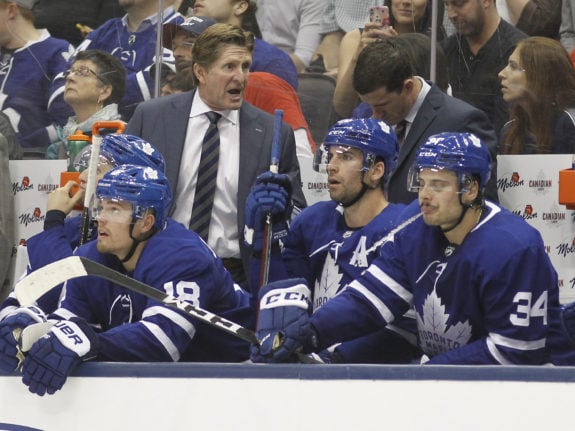
The following is the outcome of the Maple Leafs scoring or allowing the first goal and rank.
| Category | Total |
| Wins When Scoring First | 3 (31st) |
| Wins When Opponent Scores First | 6 (1st) |
| Loss When Opponent Scores First | 5 (11th) |
| OT Loss When Opponent Scores First | 3 (1st) |
The Maple Leafs have usually clawed their way back for a win, including going into overtime, when their opponent scores first. They’ve constantly put themselves in a position where they end up chasing the game in order to try and win. It’s great that they get a full two points or even one point, but when you consistently put yourself in that situation every game, you’re playing with fire. Their bad habits will eventually catch up to them.
That’s not going to work most nights. The most recent example of this came Sunday night against the Chicago Blackhawks.
While Michael Hutchinson was shaky, to put the blame all on him isn’t fair. The whole team needs to be better on how they approach each game and come out with a full 60-minute effort. Yes, they managed to comeback, but again that start was unacceptable.
The best teams in the league are dominant from the opening puck drop on a consistent basis. While the Maple Leafs have a massive pool of talent, they’re not a dominant team. At best there might have been one or two games where this team was dominant from beginning to end.
If they don’t want to continue chasing the game from the start, then the players need to make that change and the effort to be better. They need to do more than just take ownership.
Lazy Penalties Need to Stop
When you’re chasing the game, you end up taking a costly penalty. The Maple Leafs have been lazy in this regard. When you start getting your stick up high and have bad positioning on your opponent, chances are you’re going to get a penalty.
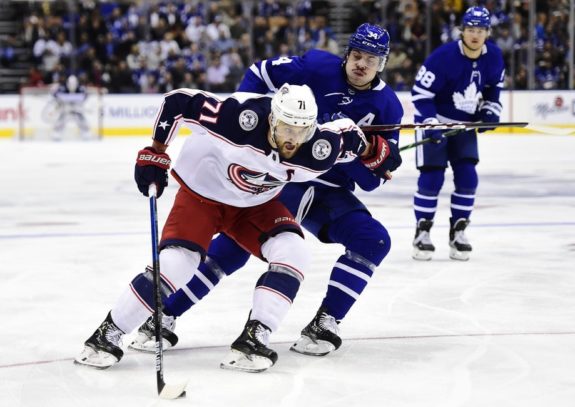
In total, the Maple Leafs have 76 penalties (seventh in the league) with 73 of them being minor penalties (third). The following chart shows the number of the top infractions the Maple Leafs have committed.
| Infraction | Number of Penalties |
| Holding | 9 |
| Hooking | 8 |
| Interference | 14 |
| Slashing | 9 |
| Tripping | 15 |
The amount of tripping and interference calls is alarming. They’re either one step behind or they’re in a poor position and constantly impede the opposing player from getting the puck. Everyone needs to start being more engaged and moving their feet. With the interference calls, they need to be in a better spot to engage in a battle with the opposing player and take them out of the play at the right time.
Power Play Back to Being Predictable
The power play that was once deadly has continued to struggle this year and it’s become extremely troubling. With a power play that consists of John Tavares, Auston Matthews, Mitch Marner and Morgan Rielly, you’d think the man advantage would be in favour of the Maple Leafs.
Their puck movement and zone entries have been the reason for their mediocre 18.2 percent rate that ranks 18th overall. Too many times we’ve seen Marner carry the puck up from a drop pass but doesn’t utilize the speed that he’s known to have. Now that teams know their tendencies they have an idea of what to expect.
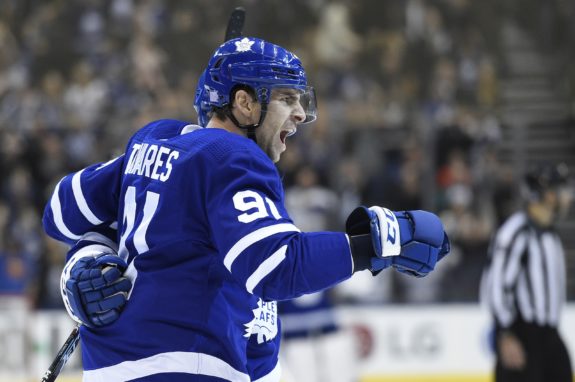
Paul McFarland hasn’t done a great job in changing the power play. With the Florida Panthers, we saw excellent puck movement and cycling from the second-best unit in the league last year (26.8 percent). While McFarland swapped Matthews and Marner to their off-wings, it has worked at times, but teams are once again catching on to their predictability.
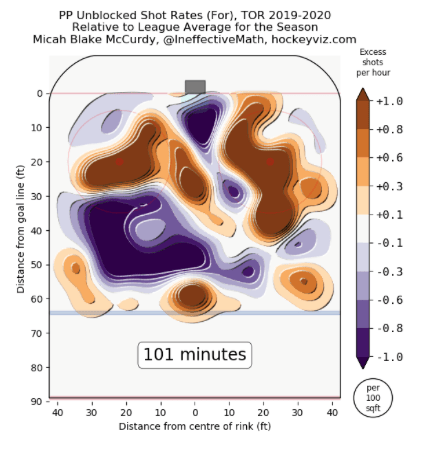
The Maple Leafs basically have two main points on the power play, the top of the left circle where Marner is stationed and the whole right side where Matthews is (the two orange dark orange spots). While they wanted Matthews to get more one-timers, it also sets Marner up for his. However, teams are still taking away that passing lane. In addition, they’re also trying to use the point shot, which hasn’t been working at all.
What they should focus on is the high danger area in front of the net (the dark purple spot). They’re averaging shots below the league average in front of the net. The smart thing to do was putting Tavares back there to be a net-front presence. Having Tavares in front of the net opens up another setup play where he has the ability to use his hands in tight.
The overall puck movement and cycle just isn’t cutting it for the team. This is what made the Panthers lethal with the man advantage. Everyone was in on the attack and not just using one player. On the plus side, the Maple Leafs managed to score two power-play goals against the Blackhawks. Hopefully, this will get things back on track.
Defense Still an Issue
It’s obvious that the Maple Leafs defence needs to be better. Too many odd-man rushes, too many shots against, too many times players are out of position, it’s the same old narrative every game. However, the players need to be held accountable for their mistakes and poor decision-making and positioning without the puck.
The Maple Leafs have one of the leagues worst High Danger Save Percentage (75.21), are 24th in High Danger Chances Against (156) and 29th in High Danger Goals Against (29). If there’s one area they need to improve on, it’s better defending in the high danger area.
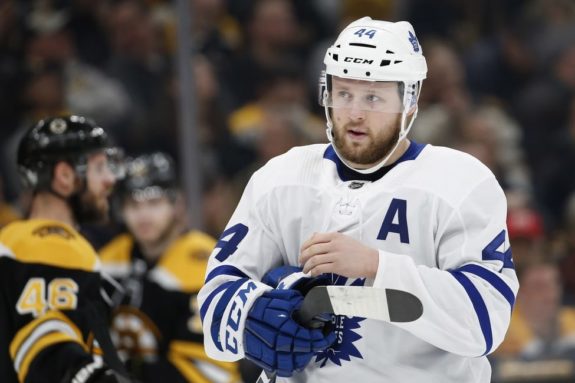
The Blackhawks game was a prime example of defensive miscues and breakdowns, especially in the high danger area. There was the four-on-three Jonathan Toews goal, the Brandon Saad go-ahead goal and many more issues with that game.
We can keep talking about these issues over and over again, but it’s gotten to a point where it’s tiring. If the Maple Leafs want to have any kind of success for the rest of this season, they need to work and improve on their play. If they want to be taken seriously, they have to buckle down and get to work.
Stats and numbers are current as of Nov. 13. Statistics from IcyData, NHL.com and Natural Stat Trick.